While there are a number of what we might call “multi-caliber,” or “convertible,” revolvers available on the market, the guns that I call “switch-barrel” revolvers are far and few between. While you’ll probably find some factory-produced convertibles on the shelf of your local gun shop, the switch-barrel revolvers are normally custom propositions, made one at a time by talented gunsmiths.
The rarity of these guns makes them super interesting to lots of RevolverGuys, so let’s take a look at a pair of switch-barrels that I ran across in 2024.
SIMILAR, BUT NOT THE SAME
But first, some definitions. In my lexicon, a “multi-caliber” or “convertible” revolver is a different animal than a “switch-barrel.”
The former class of guns includes revolvers that can be adapted to shoot a variety of calibers through the same barrel, often by changing the cylinder out for another. Popular examples of these guns include the .22 LR / .22 WMR convertible Ruger Single Six and Super Wrangler, the .357 Magnum / 9mm and .45 Colt / .45 ACP Ruger Blackhawk Convertibles, and the .38 Special / .357 Magnum / 9mm convertible Taurus Model 692.
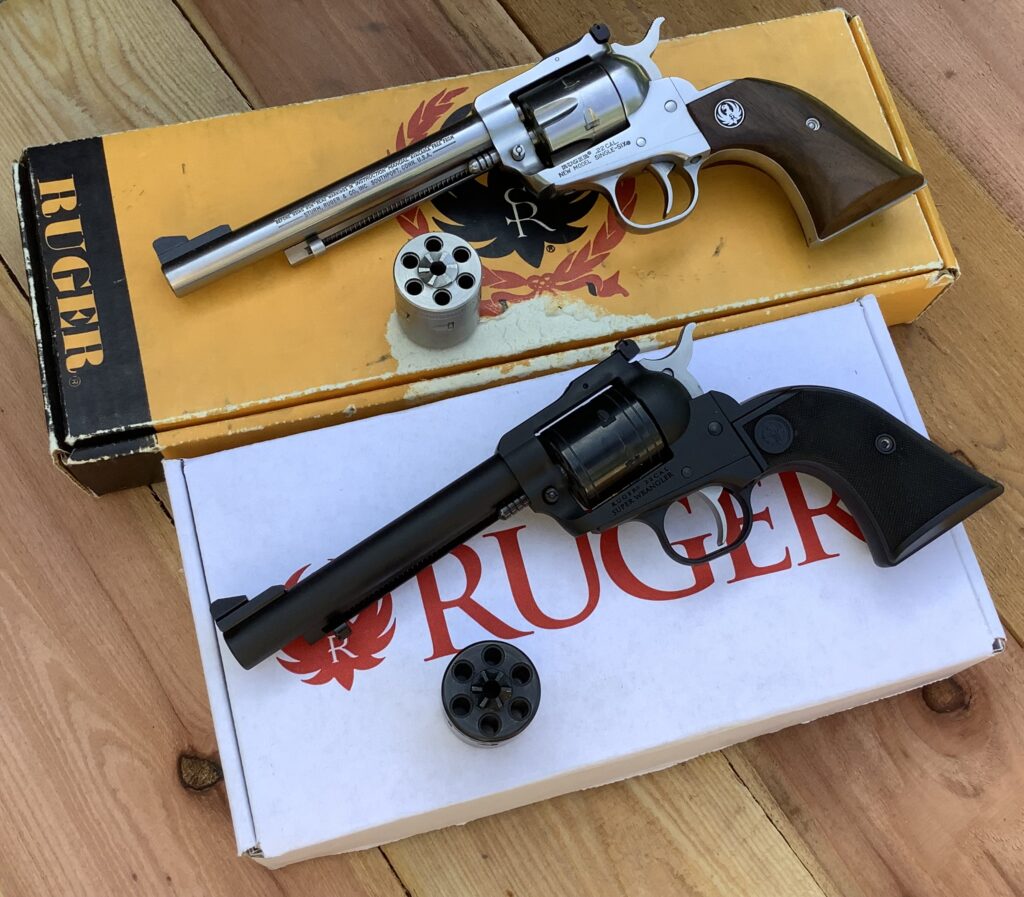
While the ability to shoot multiple calibers through the same barrel makes these guns quite versatile, a switch-barrel gun really ups the ante. In a switch-barrel system, the barrels can be removed and replaced with others, allowing the user to change the length and profile at will. In some cases, the barrels can even be replaced with substitutes bored for an entirely different caliber, which means the range of possible calibers is limited only by the strength and size of the frame (and the strength and size of your bank account).1
Longtime RevolverGuy readers may recall our industry-leading examination of the Janz revolvers, and in particular, their switch-barrel Type EM-S and Type E-S models that can accommodate calibers ranging from .22 LR to .454 Casull on the same frame. These are examples of what I mean by “switch-barrel” revolvers.
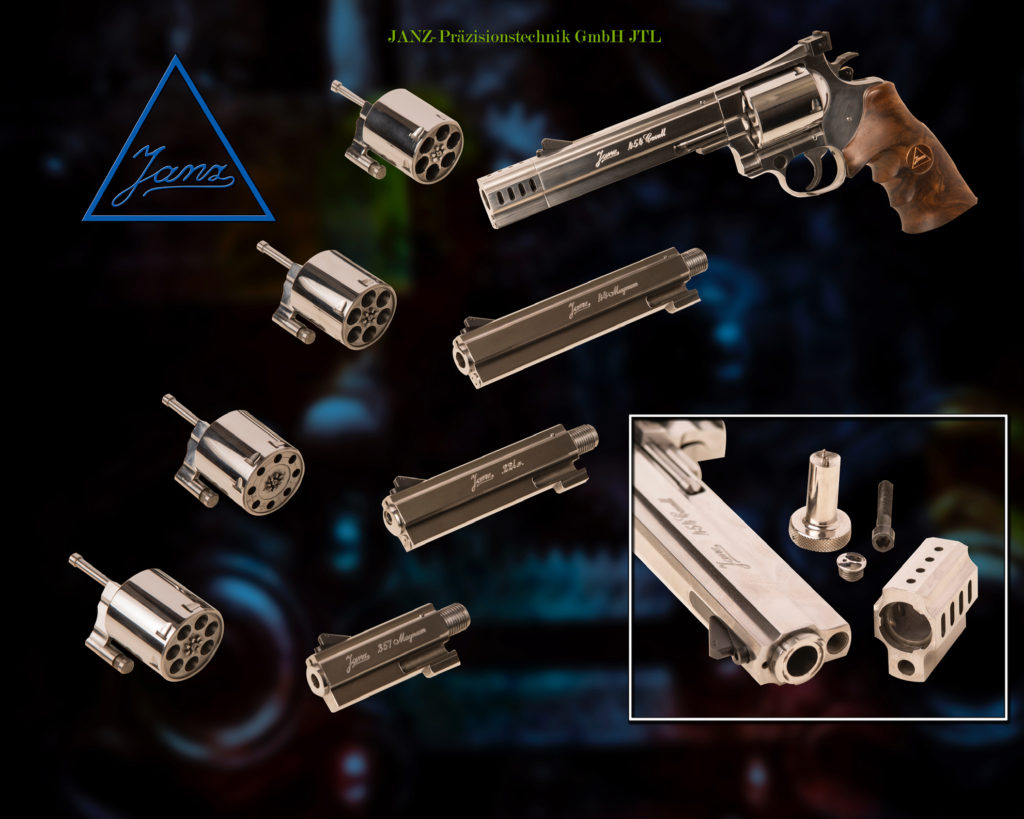
The German Janz revolvers are quite expensive and sold only through a single point of contact in the United States, but fortunately for us RevolverGuys, we’ve got some homegrown models of our own that we can appreciate.
FINKS CUSTOM GUNS
The first of these is the innovative Moreno Interchangeable Barrel System (MIBS) revolver from Finks Custom Guns. Friend Dave Fink showed me the (then) new MIBS revolver package when I was at Gunsite for the 2023 Pat Rogers Memorial Revolver Roundup, and I was immediately intrigued by the design.
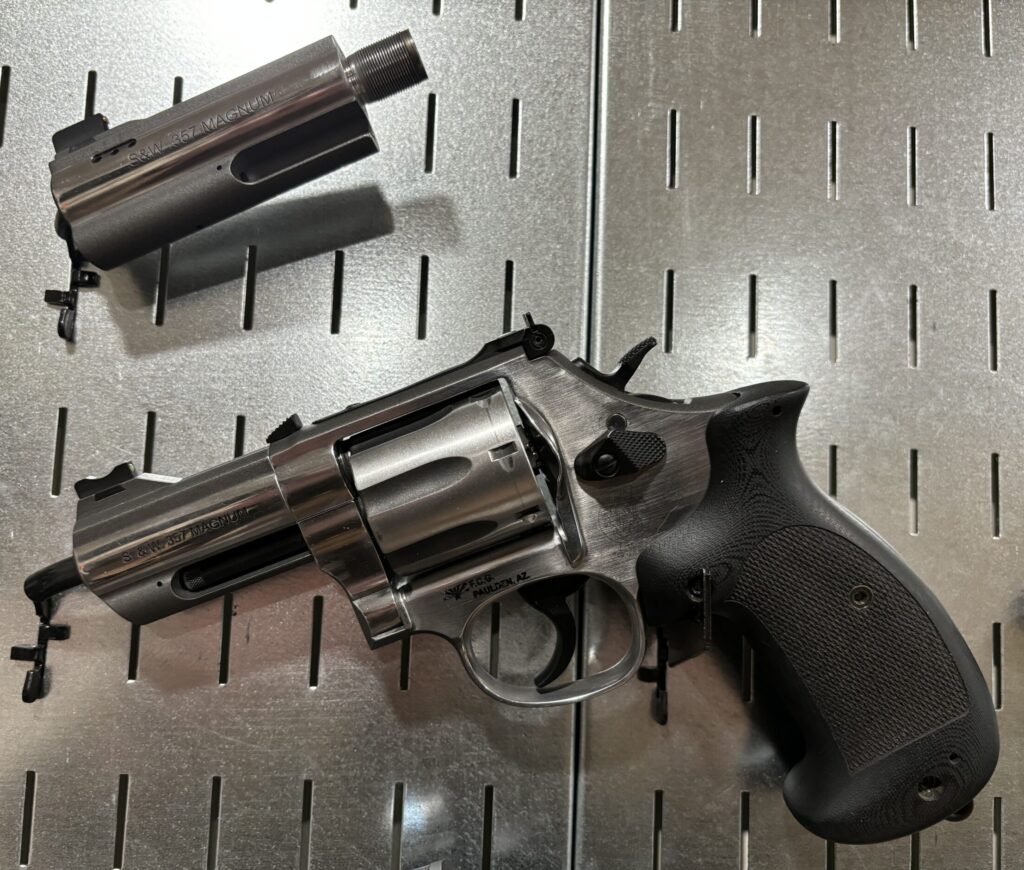
Designed by gunsmith Jake Moreno, the MIBS Package is a modification of the Smith & Wesson L-Frame revolver that allows the user to easily remove and replace barrels without the use of tools. A thumb latch on the top, forward edge of the frame releases the barrel shank so the barrel can be unscrewed from the frame by hand, and replaced by another with a different profile or barrel length.
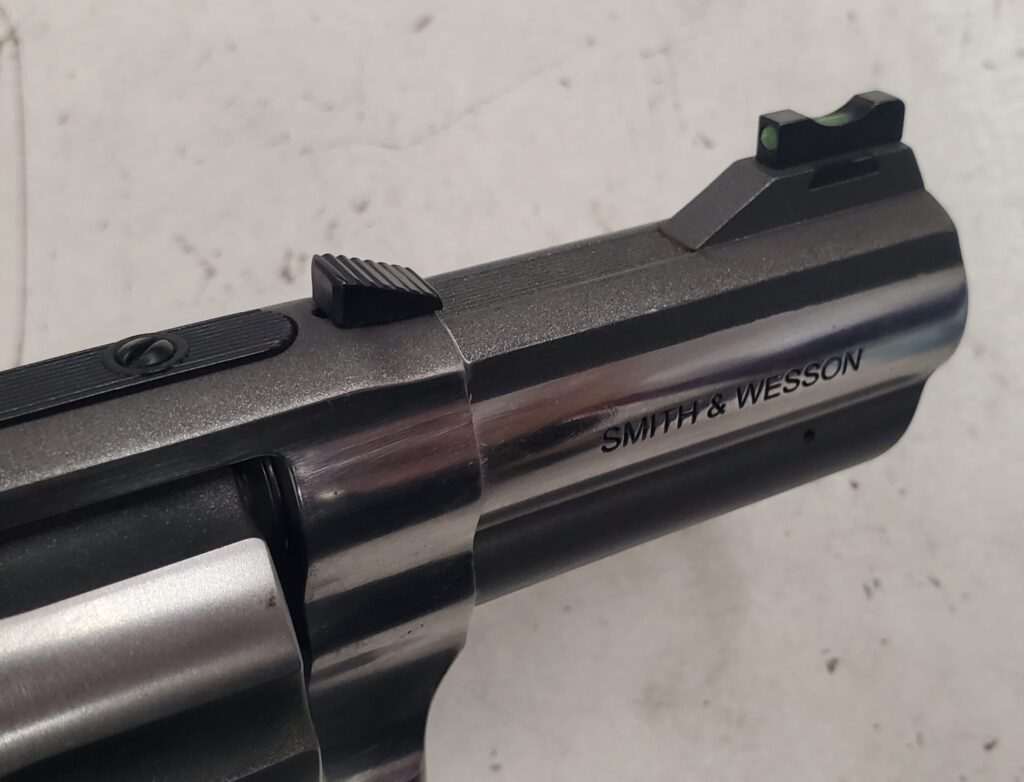
The MIBS latch rides below the sighting plane, so it doesn’t interfere with the shooter’s view of the sights. It’s easily operated, yet protected from inadvertent actuation by a spring system that’s robust enough to withstand typical brushes against the control. Since the latch is pushed rearward to release the barrel, you won’t activate it when drawing from the holster. With proper care and a good fitting holster, it won’t be an issue when holstering either, as the front sight tends to shield it a bit.
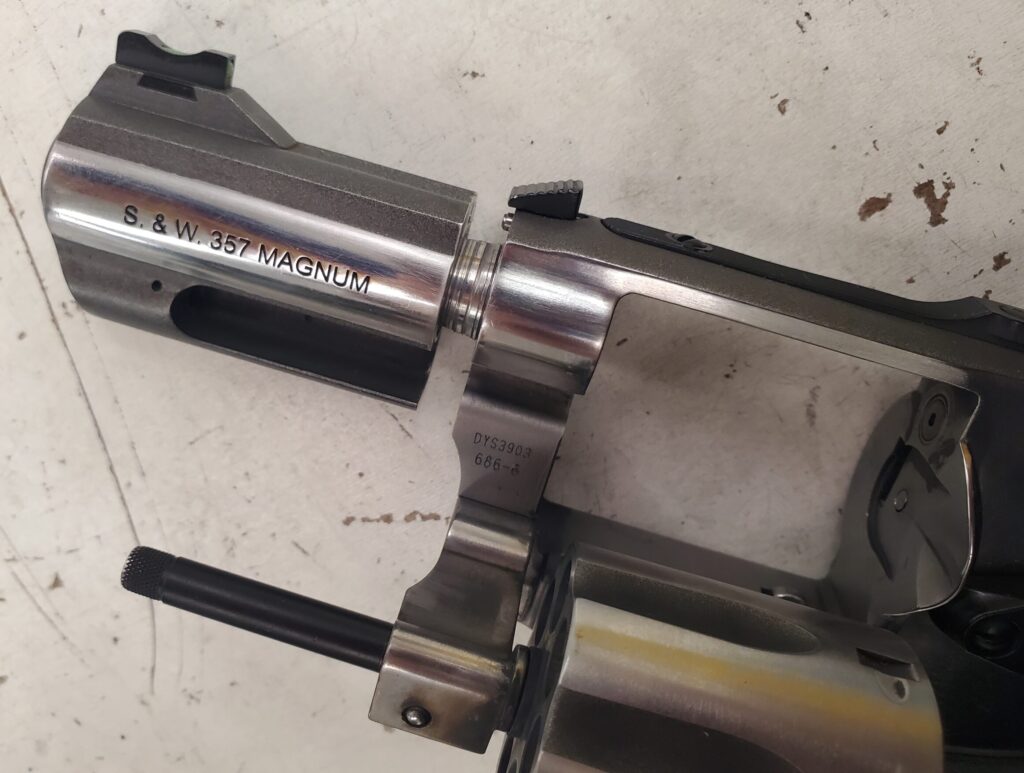
The barrel and frame threads are carefully timed so the MIBS barrels screw into place easily, yet are properly clocked. The barrel extensions are also carefully cut to provide a proper barrel-cylinder gap dimension.
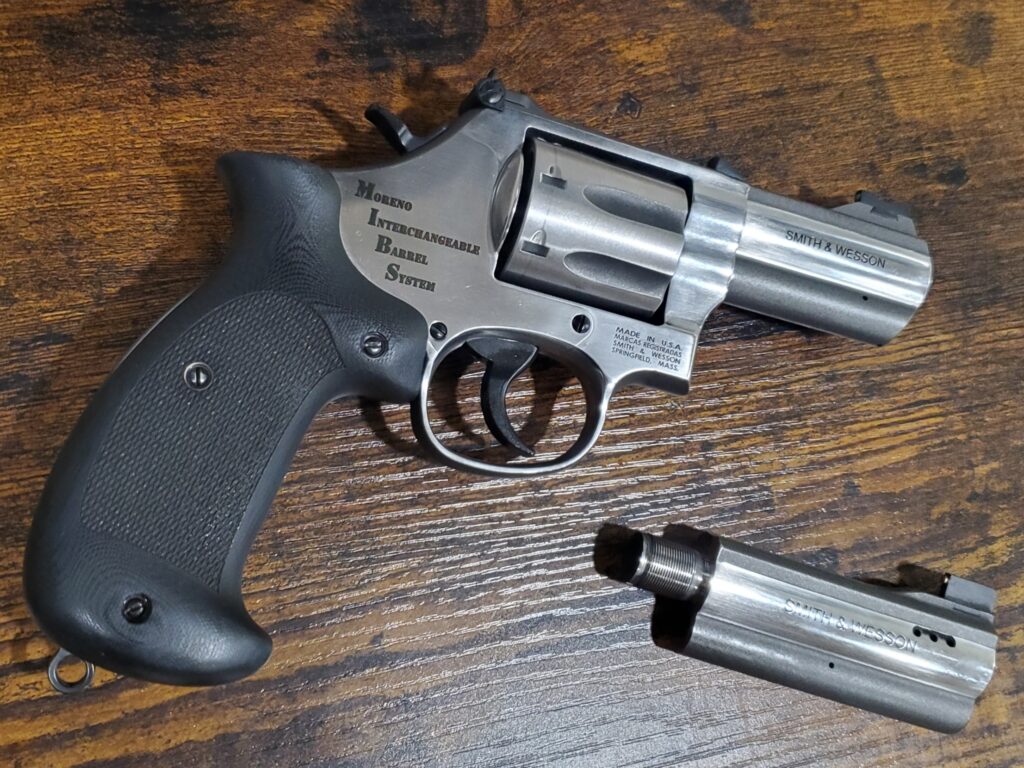
While the MIBS package doesn’t currently allow you to change calibers, the ability to easily change barrel profiles is a big plus. With a MIBS package, a shooter can quickly change from a shortened barrel for defensive use to a long barrel for hunting or competition. Barrels with different sights (including optics), tailored for specific missions, can be quickly swapped out as well with the MIBS system.
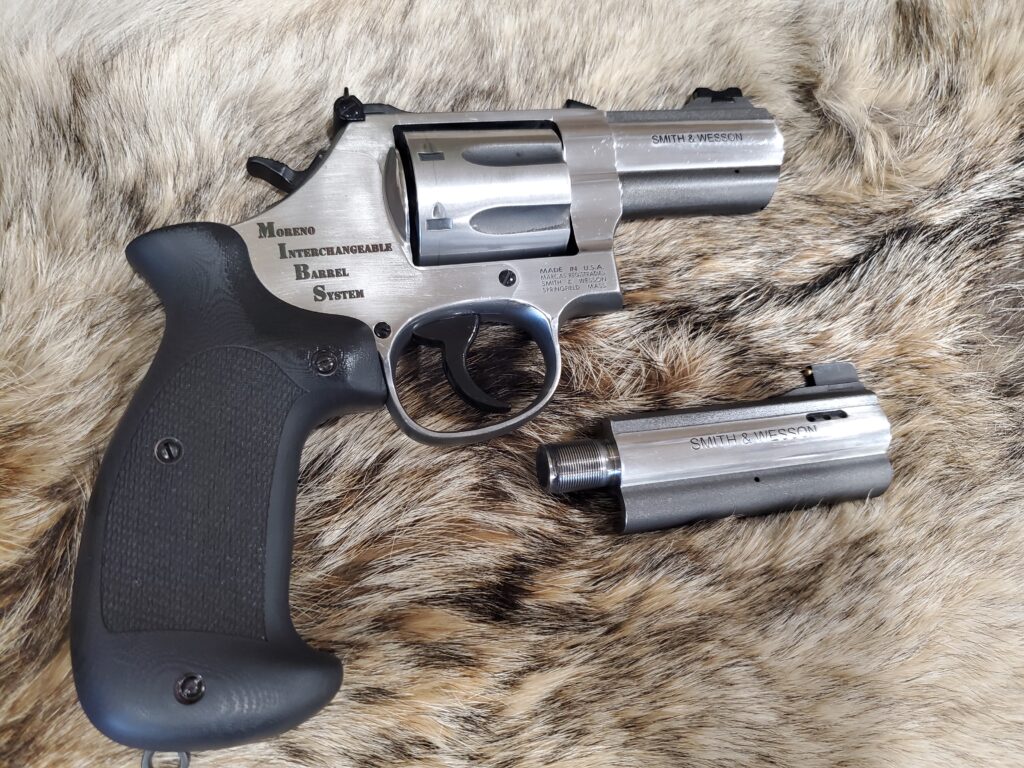
The Finks Custom Guns MIBS package adds a whole lot of versatility to your sixgun, and readers are encouraged to visit the Finks Custom Guns website, or give them a call, to find out more.
QPR PRECISION GUNSMITHING
Friend Milt Morrison is one of the industry’s best custom gunsmiths and a wellspring of creativity. His extensive background in machining opens the doors to a great degree of customization in his projects, and there’s perhaps no better display of his creativity and skill than the switch-barrel revolver of his design that he showed me at the 2024 Shootists Holiday.
Milt’s “Chameleon” switch-barrel revolver is based on a Ruger Blackhawk upper receiver / cylinder frame, and a grip frame of his own manufacture. The custom grip frame allows him to make subtle changes, where needed, to improve handling, and to keep tolerances tight and consistent. It also allows him to use materials that provide colorful accents, and enhance the beauty of the guns.
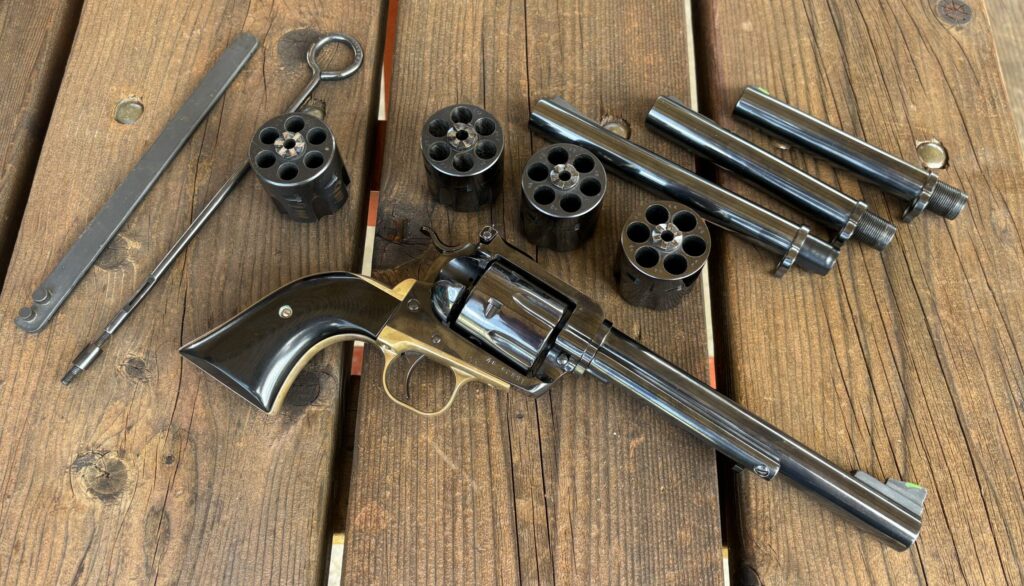
The heart of the Chameleon is a Figure-8-shaped band that rests at the base of the removable barrel, just ahead of the threaded barrel extension. One hole in the band allows the ejector rod to pass through it, and the other hole accepts the base pin. The ejector rod actually passes through a threaded locking sleeve, which is used to secure the barrel to the frame.

Milt’s Chameleon is capable of shooting a wide variety of calibers on the same frame, courtesy of his unique removable barrel system. When Milt first showed me the gun, it had a .357 Magnum cylinder and barrel installed, but within just a few minutes, he had converted the gun to a .45 Colt by replacing the barrel and cylinder. He could have, just as easily, replaced the cylinder and barrel with others chambered for .41 Magnum or .44 Magnum, which he had on standby.

Milt has carefully machined the barrel extensions and cylinders to prevent a shooter from installing a dangerously mismatched combination. A smaller caliber barrel will not fit when a larger caliber cylinder is installed. For example, a .44 Magnum cylinder won’t fit into the frame when a .357 Magnum barrel is installed, as a safety feature. It takes careful machining to ensure the barrels are easy to remove, but clock properly when installed, and Milt’s experience is evident here when you see how consistently the different barrels mate to the receiver.
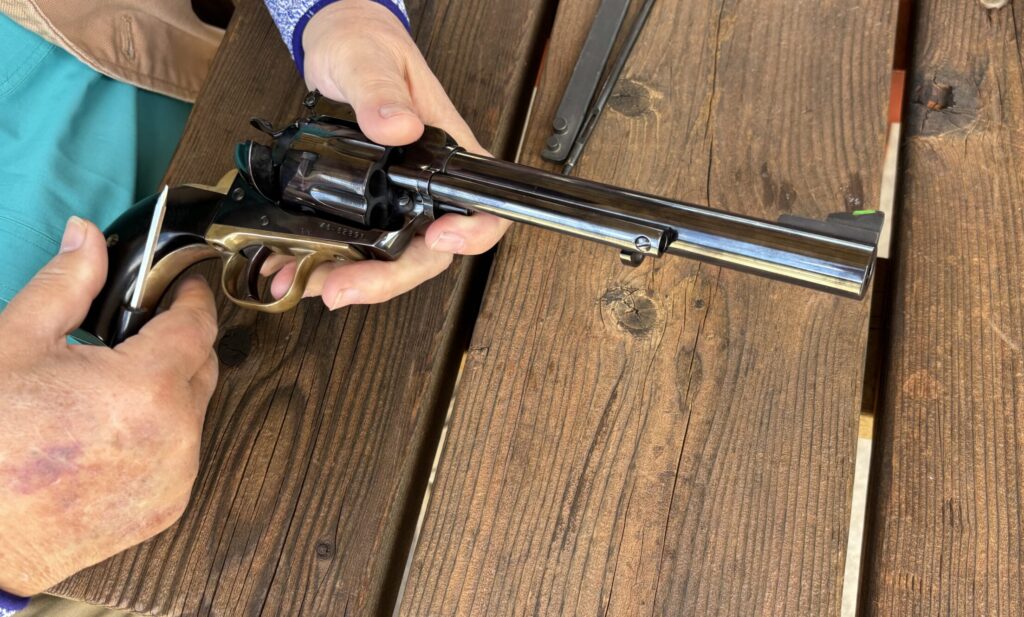

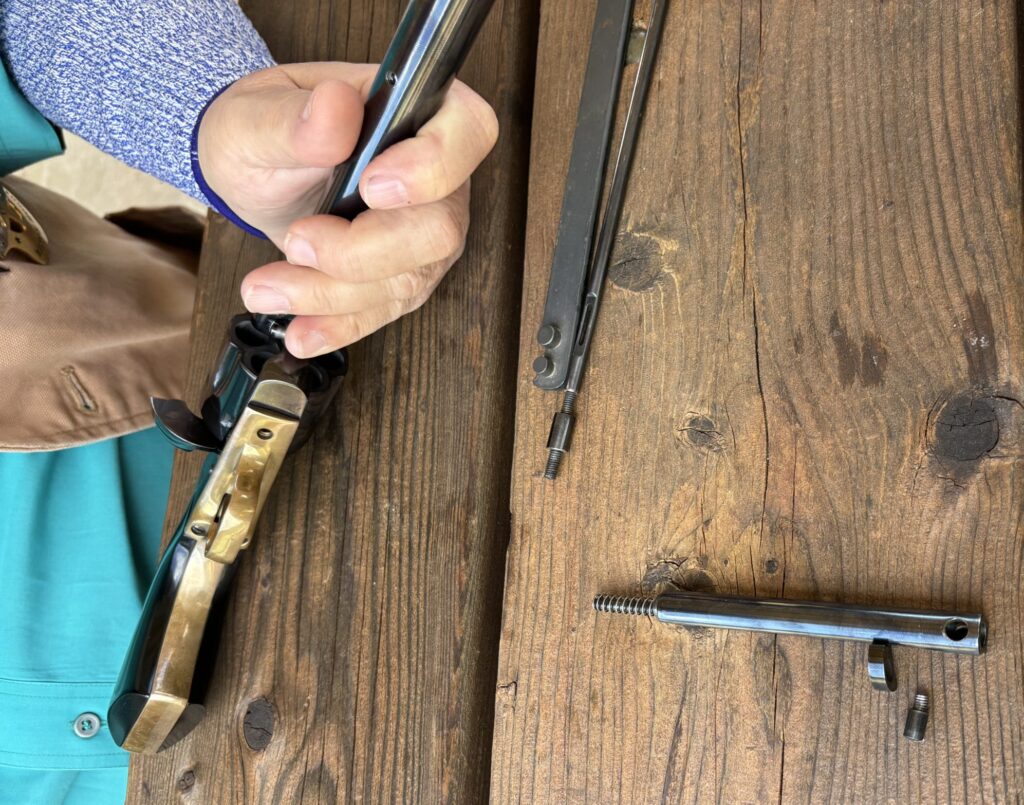
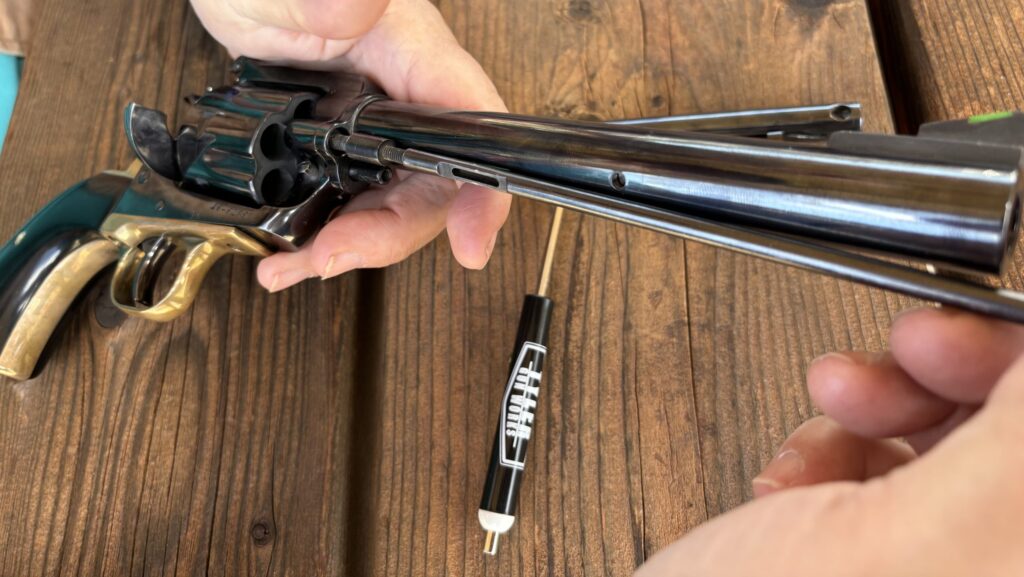
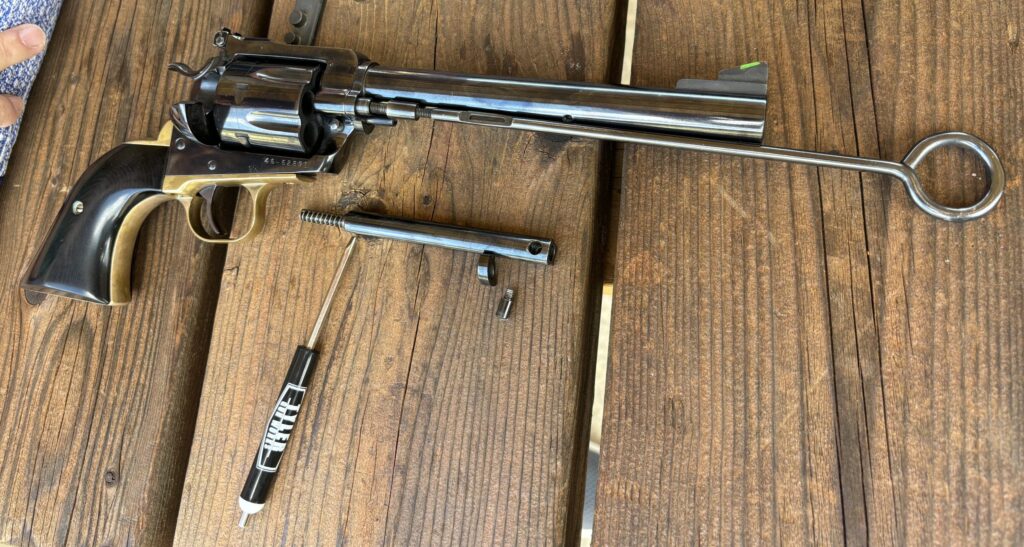
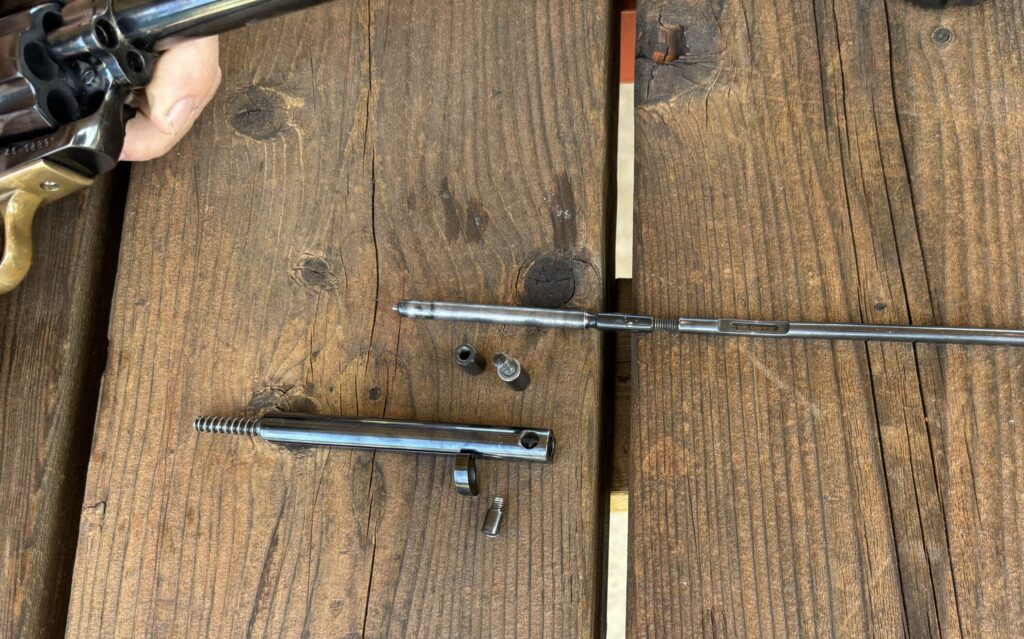
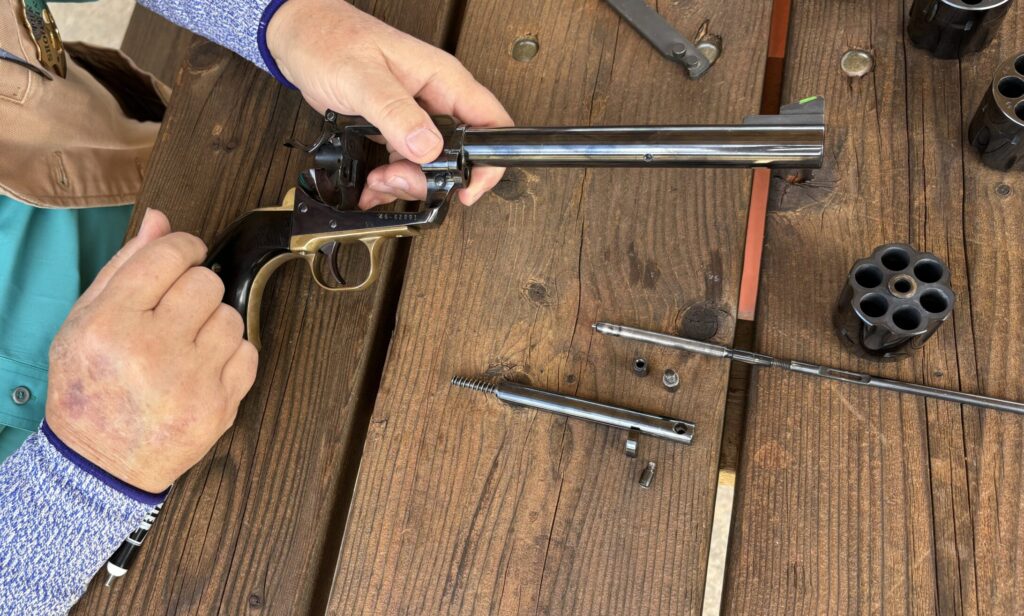
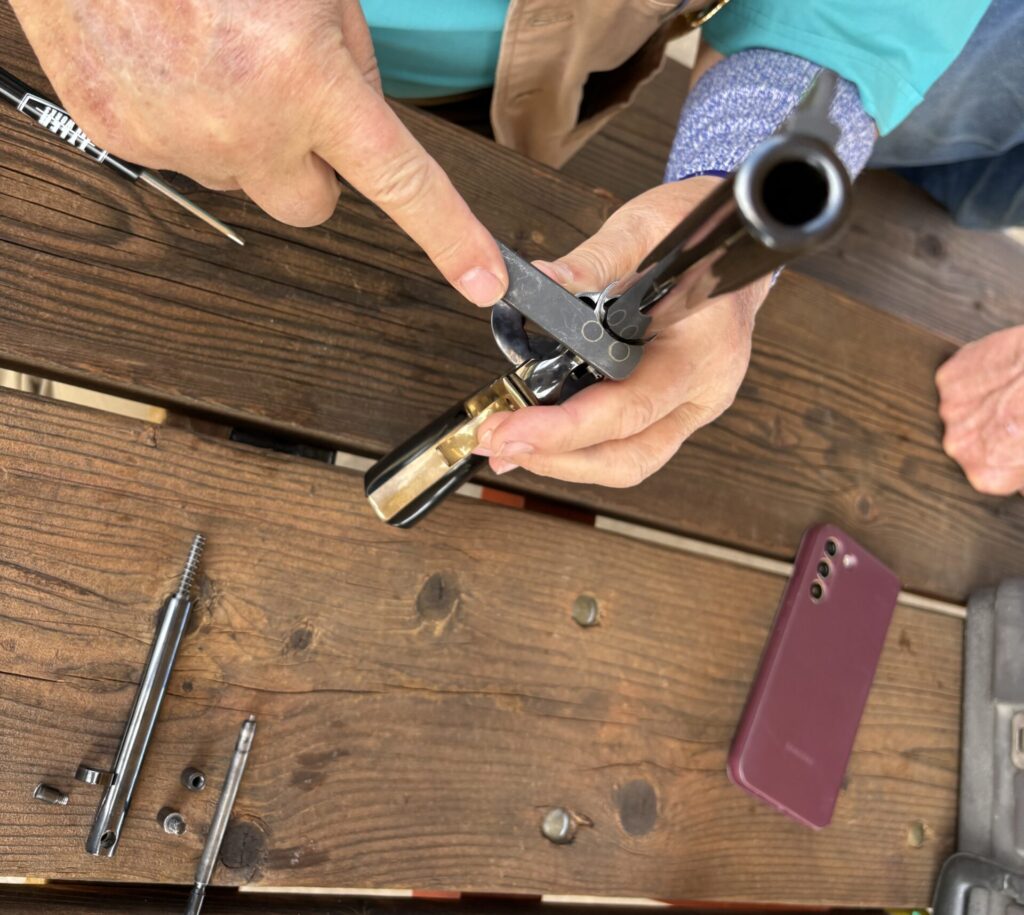
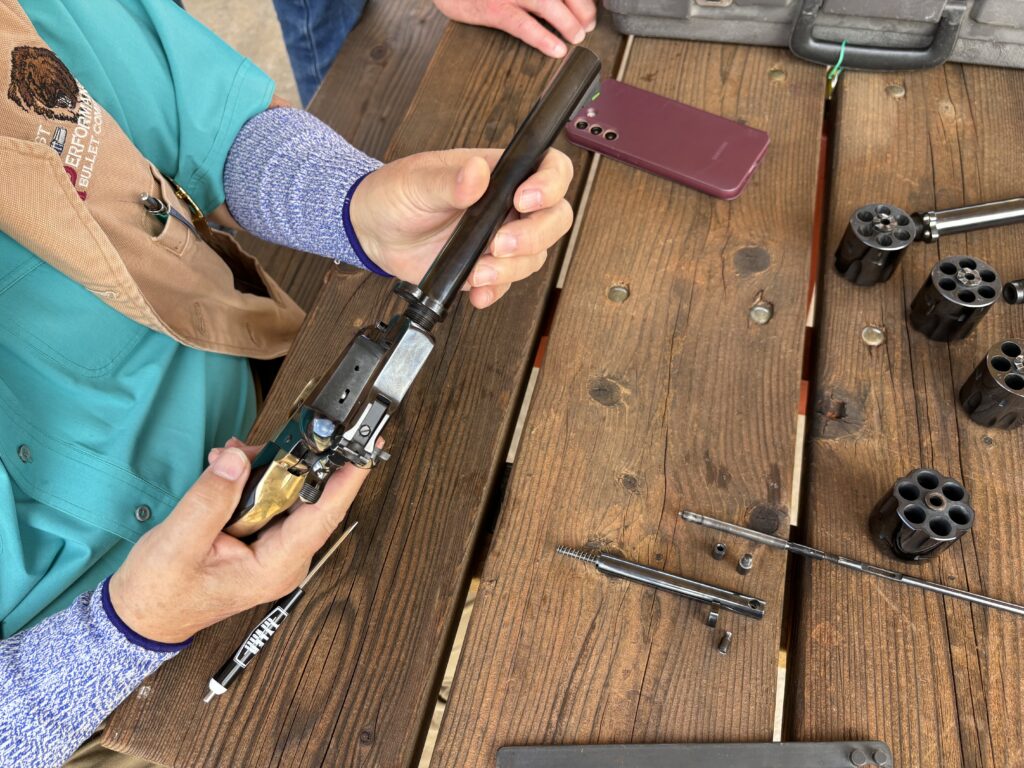
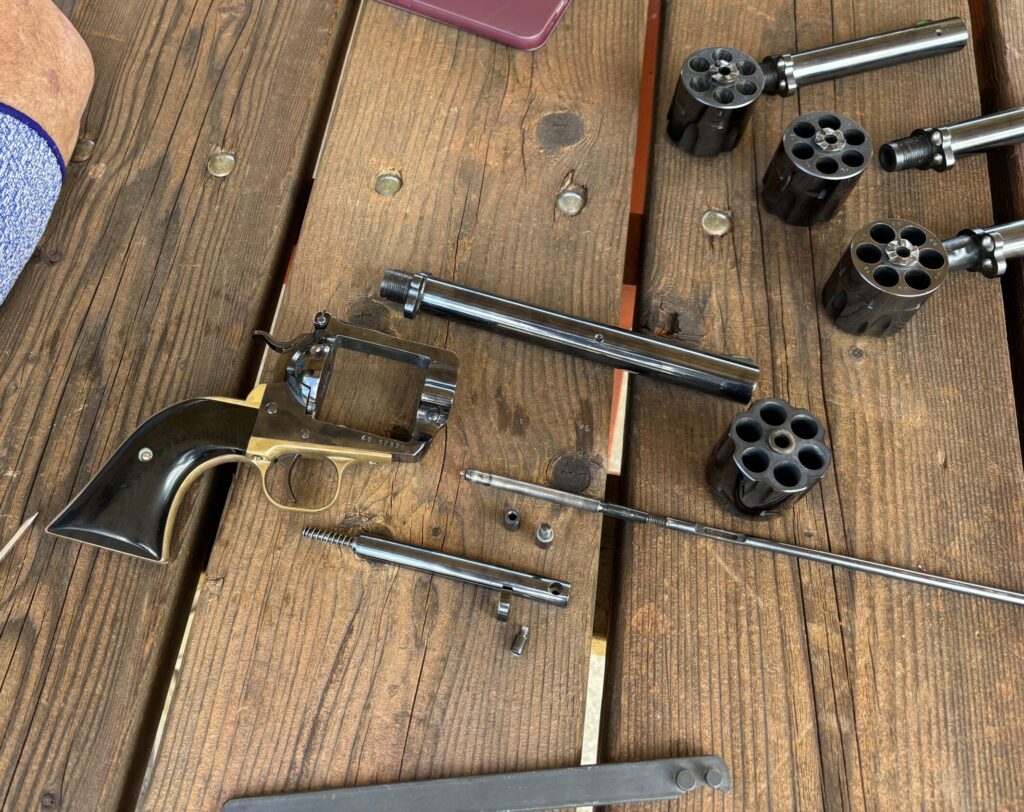

Milt manufactures the cylinders and barrels, and can chamber them for any cartridge that is safe to shoot in the .44 Magnum-sized frame. Barrel lengths and sights are all customizable to suit the shooter’s needs, so you can have a long barrel installed for long range hunting, and swap it out for a faster-handling short barrel when you get back to camp, or when you hit the river with your waders and fishing gear. Similarly, you can set one barrel up for optics, while another wears robust fixed sights of your choice.
Most shooters wouldn’t object to buying additional guns in different calibers and barrel lengths, but Milt’s exquisite Chameleon allows one gun to do the work of dozens, with the appropriate conversion kits on hand. It’s a beautiful, precision instrument, that will turn a lot more heads than a collection of factory production single actions, chambered in a handful of calibers.
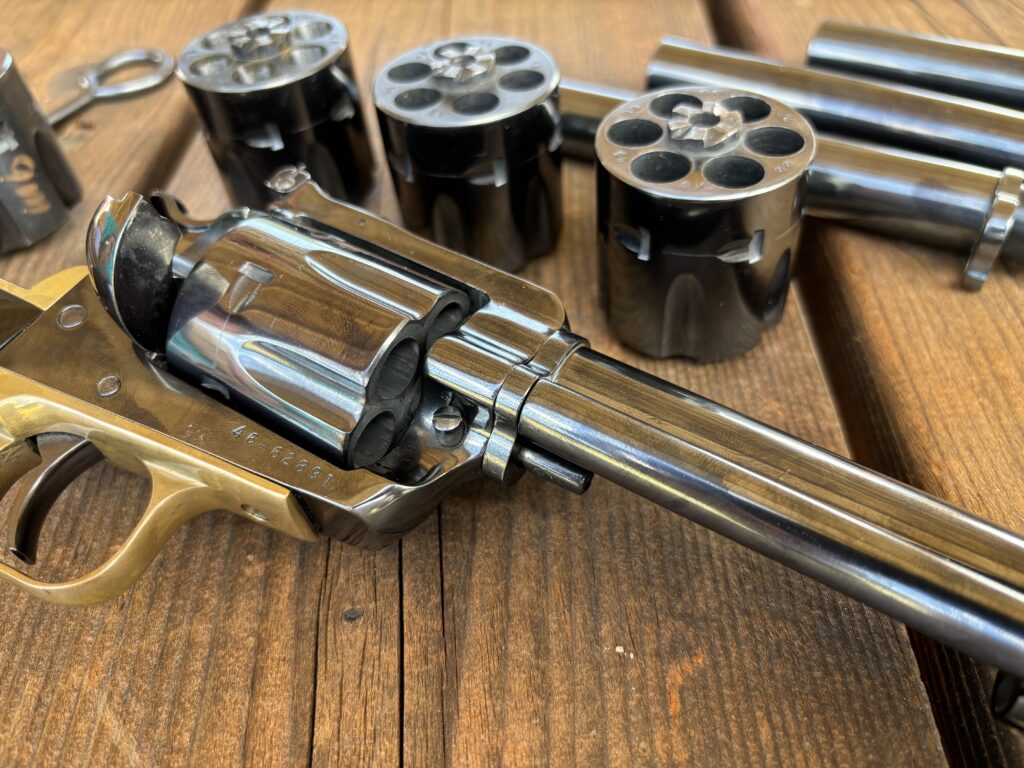
Check out the QPR Precision Gunsmithing website to see the Chameleon and more of Milt’s excellent work, to include his custom “Smolt” (a Colt barrel on a Smith & Wesson frame, combining the best of both worlds) and “Cougar” (a Colt barrel on a tough Ruger frame–he’s even put a Python barrel on a GP100 receiver) revolvers, that always leave me drooling. You’ll also want to see his exquisite, Western Hunter revolver, his John Taffin-inspired .44-40 pocket pistol, his custom packages built on Ruger Vaqueros, Colt New Services, and others, and his extensive menu of gunsmithing services.
If you can imagine it, Milt can build it!
*****
ENDNOTES
1.) The ability to change calibers is super neat, but some of the most popular switch-barrel guns haven’t incorporated the feature, like the long-since discontinued Dan Wesson revolvers, that have sadly not been resurrected by the new Czech version of the company. I actually saw a Dan Wesson-marked Model 715 revolver at the 2019 SHOT Show, but it had disappeared by the next year’s show and there’s not a single revolver in the current Dan Wesson catalog. A RevolverGuy can only hope that we’ll see the multi-barrel Dan Wesson “Pistol Pack” come back to the catalog, someday.
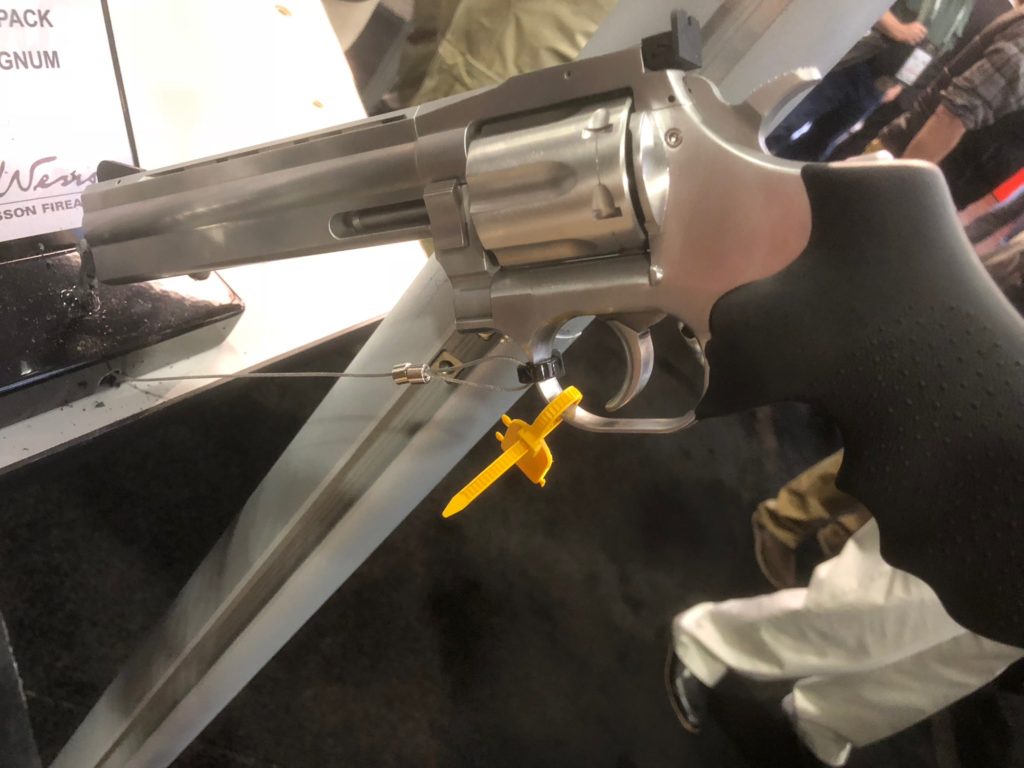

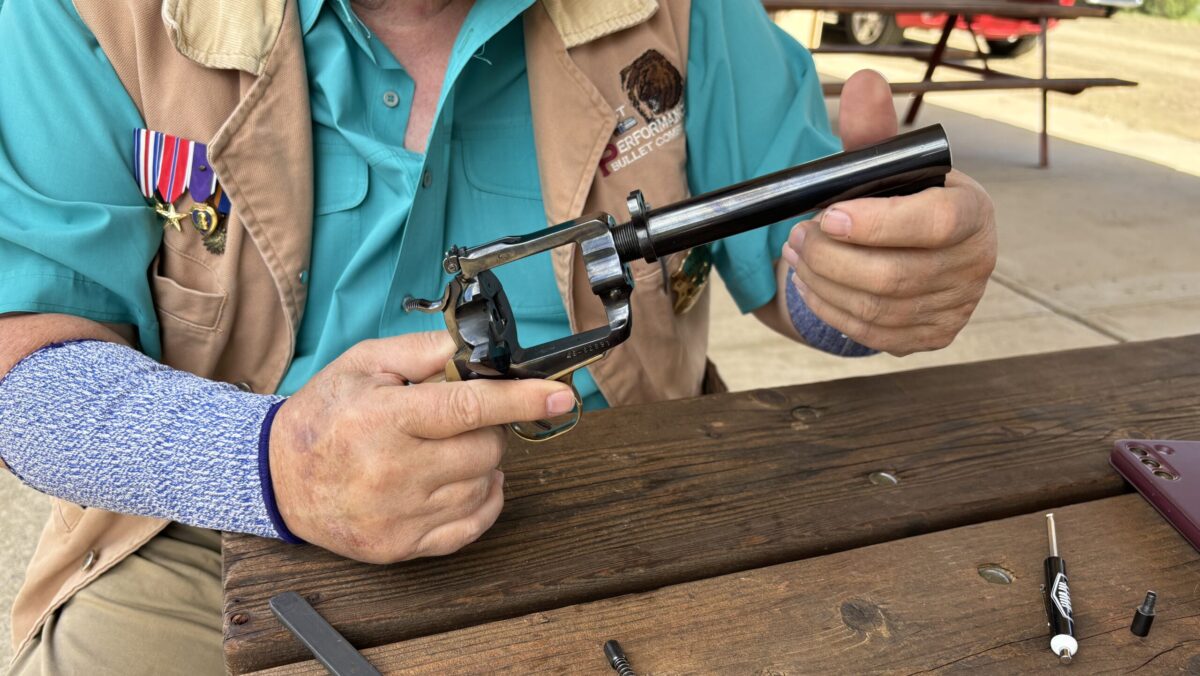
My fondness for switch-barrels began with a super-clean Dan Wesson 15-2 VH4, with bluing so deep you could drown in it! Since then, a few more DW revolvers and barrels have come my way, including a beautiful W12 snubby and a nickel 14 with 4 & 6-inch barrels that’s so shiny a guy could shave with it.!
The CA DOJ roster keeps most Dan Wessons out of my hands unless they’re C&R or private party transfers. This is just as well, as Sabrina the thoroughbred and Missouri Fox Trotter Ramblin’ Jazz gots to be cared for!
Ricky, I have almost no experience ith the Dan Wessons, but they intrigue me. I’m glad you manged to get your mitts on a few and hang onto them.
Excellent article as always Mike
I have wondered why they became known as switch caliber guns, and not switch cartridge guns. When I swap out the cylinders Buntline Colt from .22 LR to .22 mag, I am not changing calibers.
But I am using a different cartridge.
Keep up the good work.
Thank you Sir, much appreciated!
It’s a good point. I guess if we’re really splitting hairs, we could say the 9mm is a different caliber than .38 Spl / .357 Mag, but they’re so close we can treat them as identical, for all practical purposes. “Switch-Cartridge” makes a whole lot more sense than “Switch -Caliber” in most cases.
Oh boy, another temptation, that is, a switch-barrel revolver.
😁
Totally fascinating!!
I love it! When I win the lottery I’m gonna…